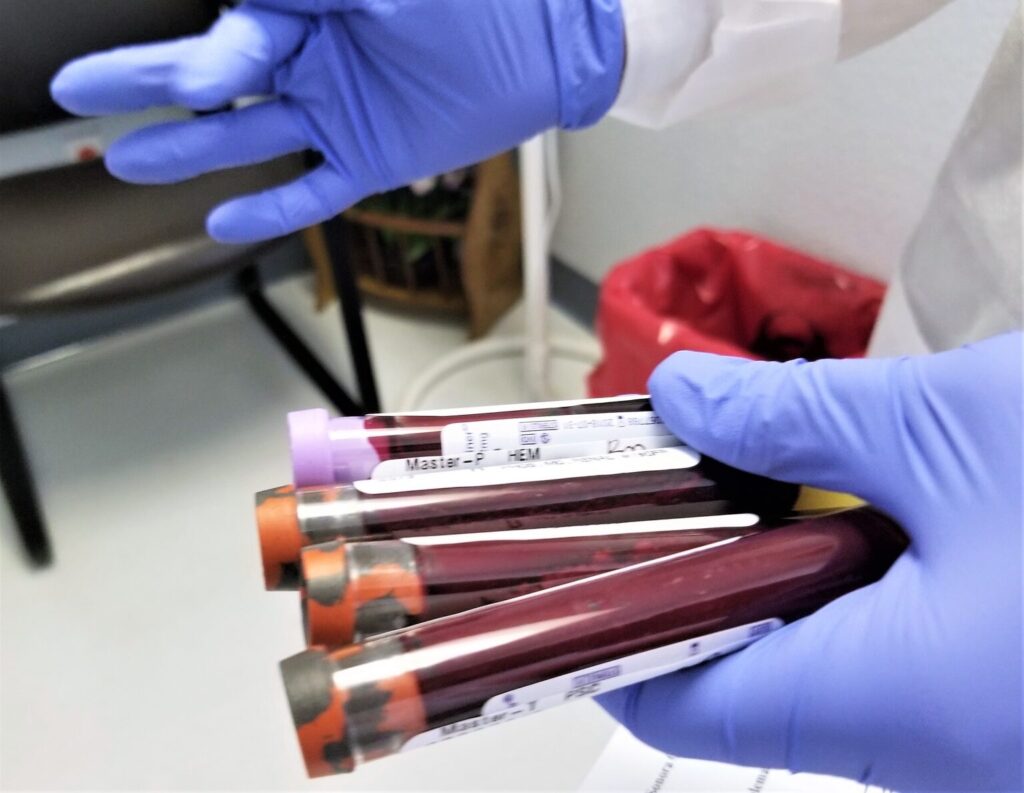
Living with sickle cell disease: Screening, lifestyle and daily challenges
Living with sickle cell disease can be a challenging and life-altering experience. In a report, the WHO defines it as a common genetic disorder caused by a hemoglobin abnormality. The patient inherits mutant hemoglobin genes from both parents. The disease affects red blood cells and their ability to carry oxygen, leading to a range of health issues, including fatigue, organ damage, and increased infection risk. Sickle cell disease is one of the hemoglobinopathies, along with thalassemias. It occurs worldwide. Of the 300,000 children born with a major hemoglobin abnormality each year, 200,000 are born with sickle cell disease in Africa. In certain regions, the high frequency of the sickle cell gene leads to a high rate of affected newborns.
Living with sickle cell disease can be a daily challenge, but there are ways to manage the condition and improve quality of life. In this article, we will explore various aspects of life with sickle cell disease, from early screening to adopting a healthy lifestyle, and the daily challenges patients face.
LIVING WITH SICKLE CELL DISEASE: EARLY SCREENING FOR BETTER MANAGEMENT
Sickle cell disease is particularly common among people from sub-Saharan Africa, India, Saudi Arabia, and Mediterranean countries. In parts of sub-Saharan Africa, it affects up to 2% of newborns. Typically identified through neonatal or prenatal screening in cases of specific family history, early detection allows parents to be informed quickly and to make appropriate care decisions.
For a newborn, screening should be performed within 72 hours after a vaginal birth and within 96 hours after a cesarean section. Prenatal screening can be done as early as the twelfth week of pregnancy for at-risk couples, via trophoblast biopsy analysis.
The diagnosis is confirmed by blood smear or hemoglobin electrophoresis, since demonstration of hemoglobin S is required for a definitive diagnosis. In complex cases, genetic tests detect the mutant gene responsible for the disease.

LIVING WITH SICKLE CELL DISEASE: WHAT ARE THE SYMPTOMS?
Sickle cell disease presents many symptoms. Not every patient shows all symptoms, but three main ones are:
- Chronic anemia: characterized by fatigue and general weakness. In severe cases, shortness of breath and rapid heartbeat may occur. Chronic anemia manifests in sickle cell patients as yellowing of the eyes and skin—benign—and increased fatigue that patients often adapt to.
- Fever from infections: frequent fevers occur due to increased susceptibility to infections, including respiratory infections or viral illnesses like flu, hepatitis, meningitis, urinary tract infections, and osteomyelitis.
- Pain from vaso-occlusive crises: sudden pain often in bones, feet, hands, chest, brain, or abdomen, caused by deformed red blood cells blocking small blood vessels and depriving organs of oxygen. These crises, the most common manifestation, can be acute or chronic.
LIVING WITH SICKLE CELL DISEASE: WHAT TREATMENT?
Although management has greatly improved, sickle cell disease remains chronic with no cure to date. Treatment focuses on symptom management and complications. Medical care involves monitoring anemia, preventing painful crises and infections, and quickly addressing complications.

Pain management:
To manage pain crises, patients are prescribed analgesics like acetaminophen or ibuprofen. Stronger painkillers may be administered in hospital for severe crises.
For patients with frequent severe vaso-occlusive crises, preventive therapy via transfusions and/or exchange transfusions(1) may be implemented. Hydroxyurea (SIKLOS) is also prescribed to stimulate fetal hemoglobin (HbF) production by the bone marrow. It is reserved for patients hospitalized more than three times a year for crises or complications, or with severe recurrent acute chest syndrome episodes, due to potential serious side effects.
Anemia management:
Acute anemia is treated with blood transfusions to restore functional hemoglobin and optimal organ oxygenation.
Stem cell treatment:
In severe cases, hematopoietic stem cell transplants may be necessary. This complex procedure is reserved for patients unresponsive to standard treatments.
Children’s care
With early screening, medical follow-up can begin at two months. Neonatal screening significantly reduces morbidity and mortality in infants and young children, provided it is linked to diagnostic testing, parent education, and comprehensive care. Pediatricians and specialized centers coordinate care, including:
- Standard immunizations plus influenza vaccine (where available), BCG (tuberculosis), hepatitis A, and typhoid vaccines;
- Continuous prophylactic antibiotic (penicillin) for at least five years;
- Folate supplementation (vitamin B9);
- Monitoring every 2–3 months with blood tests, ultrasounds, X-rays, and transcranial Doppler from 12–18 months;
- Parent education on emergency warning signs;
- Guidance on healthy habits (hydration, preventing chills, dental and body hygiene).
Unfortunately, this follow-up requires patient resources for consultations and medications, and governmental commitment to systematic care. Many African countries lag behind in implementing comprehensive management.
Pregnant women’s care
Pregnant women with sickle cell disease face increased risks of anemia, vaso-occlusive crises, and acute chest syndrome, and are more prone to pregnancy-related complications.
Sickle cell disease may affect the fetus, causing intrauterine growth restriction, preterm birth, reduced muscle tone, or even fetal demise.
SICKLE CELL DISEASE AND A HEALTHY LIFESTYLE
A healthy lifestyle is essential for those living with sickle cell disease. Here are some tips to minimize risks:

I. Stay hydrated and eat a balanced diet
Drink plenty of fluids—1.5 L daily for adults, 1–2 L for children. Eat healthy foods like fruits, vegetables, and whole grains. Ensure adequate rest and engage in light exercise such as walking or swimming. Avoid stress, smoking, passive smoking, and limit stimulants like caffeine.
II. Prevent infections
Key hygiene measures include:
- Disinfect even minor wounds immediately;
- Maintain good oral hygiene;
- Avoid exposure to cold;
- Wash hands regularly;
- Vaccinations against influenza and other infections help reduce complications.
III. Monitor blood oxygen levels
Avoid high altitudes to prevent hypoxia. Also avoid extreme heat and limit alcohol intake to prevent dehydration.
IV. Watch for warning signs and communicate with healthcare providers
Follow vaccination schedules, monitor for anemia, vaso-occlusive crises, and fever, check mucous membranes and urine, and avoid corticosteroids.
If pain or discomfort is persistent, discuss it openly with your doctors and care team.
DAILY CHALLENGES: HOW TO COPE
Besides following the recommendations above, an informed, supportive network is invaluable. We recommend:
1. Communicate with your medical team
Maintain open, regular communication with your healthcare providers. Ask questions, share concerns, and discuss treatment options. Your medical team is there to support and guide you.
2. Educate your circle
Inform your family and friends about sickle cell disease so they understand your challenges and can offer the support you need. Explain symptoms, potential complications, and preventive measures.
3. Plan ahead
Prepare for crises, hospitalizations, or work/school absences by having strategies in place. A plan reduces stress and enhances your sense of control.
4. Seek social support
Join support groups or networks so you don’t face the disease alone. Sharing experiences and advice can be very helpful.
Sickle cell disease is a highly impactful, currently incurable disorder. However, it is possible to live well and extend life expectancy—even in countries with limited healthcare resources. SennaCare is committed to making health information accessible to all by connecting you with healthcare professionals who will support your journey to well-being. Contact us for more information.
(1) Exchange transfusion combines phlebotomy (to reduce mutant hemoglobin S concentration) with blood transfusion (to replace with normal hemoglobin).
Sources: WHO — Fifty-ninth World Health Assembly A59/9: Sickle Cell Disease
VIDAL — Sickle Cell Disease
Ameli — Sickle Cell Disease, a genetic blood disorder
